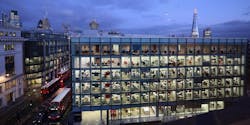High School Seniors' Future Plans May Help Bridge the Skills Gap
Nearly three in four high school seniors know what career they want to pursue, and STEM-related fields (science, technology, engineering and math) top their choices, according to a new study released last week by CareerBuilder and Economic Modeling Specialists Intl.
According to the survey, 37% of hiring managers reported that they currently have positions that, on average, stay open for 12 weeks or longer, up from 35% last year. Comparing industries, Information Technology (52%), Health Care (49%) and Manufacturing (44%) all came in significantly higher than the national average.
Among employers who have positions that stay open for 12 weeks or longer, 60% said they will raise starting salaries over the next 12 months, compared to 43% for all employers.
To get a sense of how quickly talent pools will be replenished for in-demand occupations, the study also looked at post-recession job growth for some of the hardest-to-fill positions along with the pace of college degree completions for those professions and the percentage of the workforce that is nearing retirement.
For example, employment in industries such as manufacturing had been on a downward trajectory for a number of years due to automation and sending jobs overseas. Now, more manufacturing jobs are coming back to the U.S., but the talent pool has shrunk over time due to workers moving into other fields and students avoiding related majors because jobs were being offshored.
From 2010 to 2014, there were an estimated 23,861 annual job openings for Machinists, but the number of college degrees awarded for this field was only 6,184 in 2013. Moreover, 25% of Machinists are ages 55 and older and approaching retirement, hastening the need to find replacement workers.
"There is a growing imbalance between the number of jobs being advertised and the number of jobs being filled - and the college degrees needed to keep up with employment demands," said Matt Ferguson, CEO of CareerBuilder and co-author of The Talent Equation.
"Education is one of the building blocks of our economy and one of the most important defenses we have against the skills shortage in the U.S.," Ferguson added. "More companies are promoting STEM-related careers in high schools and grammar schools, and it's encouraging to see students get excited about pursuing these fields."
About the Author

Adrienne Selko
Senior Editor - MH&L, IW, & EHS Today
Adrienne Selko has written about many topics over the 17 years she has been with Endeavor Business Media and currently focuses on workforce development strategies. Previously Adrienne was in corporate communications at a medical manufacturing company as well as a large regional bank.
She is the author of Do I Have to Wear Garlic Around My Neck? which made the Cleveland Plain Dealer's best sellers list. She is a senior editor at Material Handling & Logistics, EHS Today, and IndustryWeek.
Editorial Mission Statement:
Manufacturing is the enviable position of creating products, processes, and policies that solve the world’s problems. When the industry stepped up to manufacture what was necessary to combat the pandemic, it revealed its true nature. My goal is to showcase the sector’s ability to address a broad range of workforce issues including technology, training, diversity & inclusion, with a goal of enticing future generations to join this amazing sector.
Why I Find Manufacturing Interesting:
On my first day working for a company that made medical equipment such as MRIs, I toured the plant floor. On every wall was a photo of a person, mostly children. I asked my supervisor why this was the case and he said that the work we do at this company has saved these people’s lives. “We never forget how important our work is and everyone’s contribution to that.” From that moment on I was hooked on manufacturing.
I have talked with many people in this field who have transformed their own career development to assist others. For example, companies are hiring those with disabilities, those previously incarcerated, and other talent pools that have been underutilized. I have talked with leaders who have brought out the best in their workforce, as well as employees doing their best work while doing good for the world.
